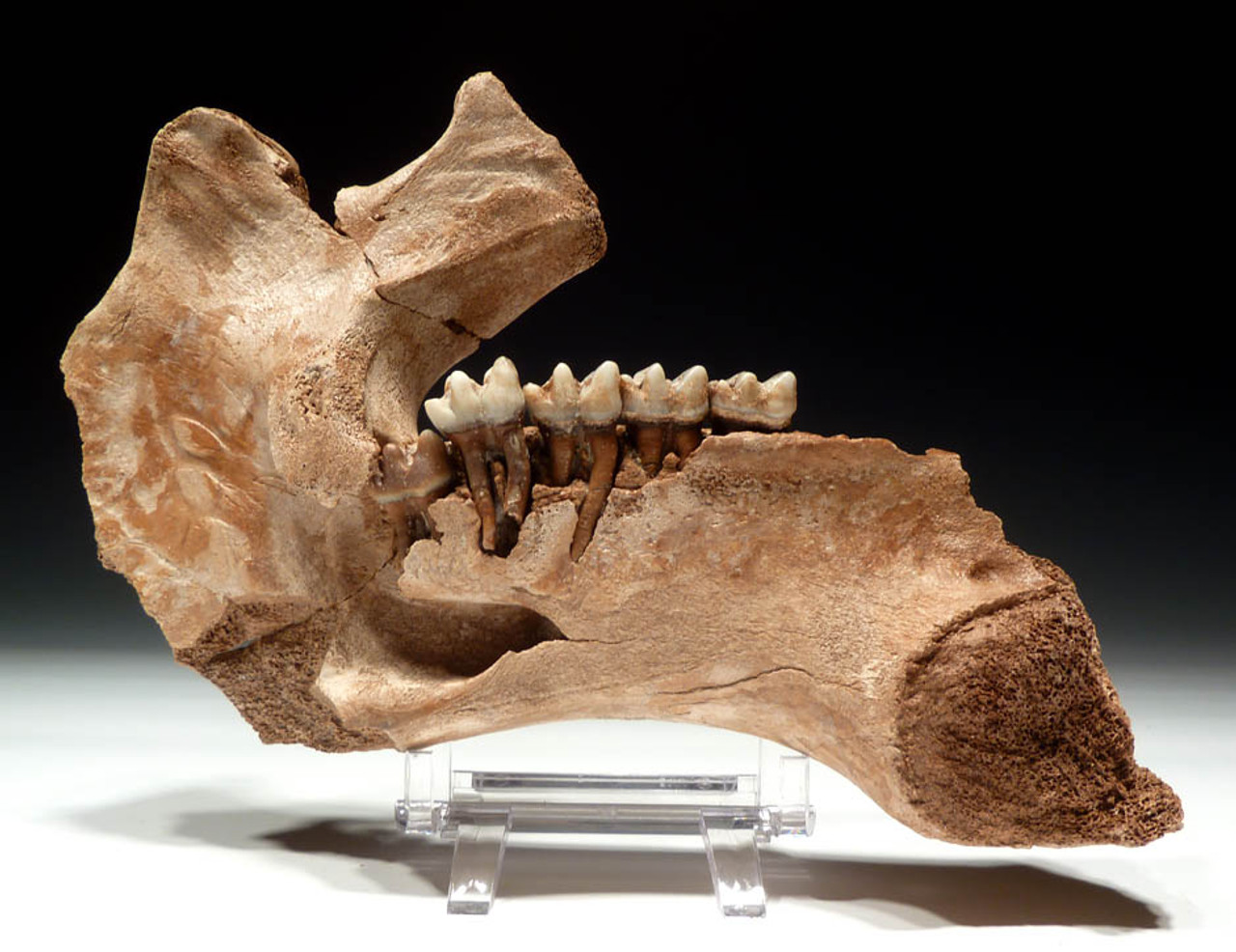Product Description
This is one of the rarest prehistoric manatee fossils you could hope for besides a complete skull. From a Middle Pleistocene spring deposit in Florida, this is a virtually complete left mandible of a prehistoric manatee called Trichechus manatus. The spring water spared the fossil from the usual black or dark brown tannins of typical Florida water deposits, hence the beautiful light color. The bone is well mineralized, feeling and sounding like porcelain when handled. The roots of the molars can be seen and there is a newly emerging molar in the back of the jaw that affords an exciting view of the development and growth of this animals teeth, throughout its life in the same way elephants had their teeth emerge in life.
ONE OF THE RAREST MANATEE FOSSILS ONE COULD FIND. ULTRA-RARE NEARLY COMPLETE MANDIBLE WITH ROOTED MOLARS INCLUDING AN EMERGING BACK MOLAR - STUNNING EDUCATIONAL DISPLAY!
HISTORY
Trichechus manatus possessed an average of seven teeth in each side of the jaw at any one time. The teeth are lophodont in nature, that is, their cusps are connected by ridges. Similar to elephants, trichechids experienced horizontal tooth replacement with new teeth emerging from the back of the jaw and progressively moving forward to replace worn teeth that were ejected or 'spit' from mouth. This method of continual tooth replacement made it ideal for manatees to chew and feed upon plentiful sea grasses.
Manatees are members of the group of aquatic mammals called Sirenians. Only two genera live today and are nearly extinct. One is Trichechus with three living species in the world and one in Florida. The other genera is Dugong with only one living species. A third genus was living as recently as two hundred years ago. Hydrodamalis once lived near the coast of the Bering Sea but was hunted to extinction.
Sirenians first appeared in the Eocene and eventually spread world-wide through various time periods mostly preferring warm water environments. Interestingly enough, Florida is the only area in the world that can boast of continual habitation of sirenians since the Eocene! Fossil remains in the state represent all known sea cow families that ever existed!
Due to the extreme buoyancy of the creature, sea cows have very dense bones that lack marrow cavities or spongy internal structure. This allows their skeletons to act as ballast thereby offsetting their buoyant body mass. They are exclusively herbivores and are highly docile creatures allowing human contact in the wild.
 US DOLLAR
US DOLLAR
 EURO
EURO
 AUSTRALIAN DOLLAR
AUSTRALIAN DOLLAR
 CANADIAN DOLLAR
CANADIAN DOLLAR
 POUND STERLING
POUND STERLING
















